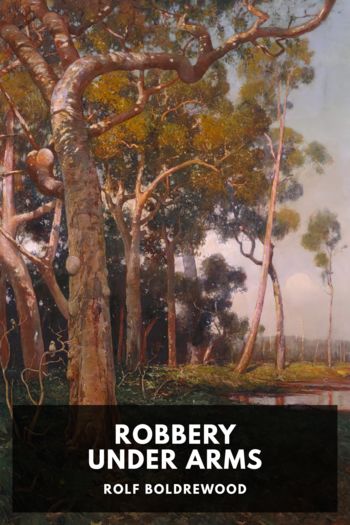A Chance to Die Elisabeth Elliot (electronic reader .txt) 📖

- Author: Elisabeth Elliot
Book online «A Chance to Die Elisabeth Elliot (electronic reader .txt) 📖». Author Elisabeth Elliot
The smaller children sometimes went to the hospital in the evenings, carrying colored lanterns, and, standing outside, sang the patients to sleep. This was an “Avenue of Gratitude,” an early opportunity for them to practice the lessons of unselfish service which their accals and sitties were daily trying to teach them by precept and example.
The devil does not care how many hospitals we build, any more than he cares how many schools and colleges we put up, if only he can pull our ideals down, and sidetrack us on to anything of any sort except the living of holy, loving, humble lives, and the bringing of men, women, and children to know our Lord Jesus Christ not only as Savior but as Sovereign Lord.
Every work undertaken in obedience to a divine command, whether the work be that form of conflict with the powers of darkness that we call prayer, or whether it be the action that follows, leads sooner or later to a new demand on personal devotion to our Lord Jesus Christ.
Murray Webb-Peploe expressed the purpose of the hospital: “a place where people may come, not to be preached at, dosed, and dealt with as cases, but to feel at home, to watch, to thaw, to allow those who take their names, and wash their bandages, and dress their wounds, to share with them what the Lord Jesus Christ has done and can do for them.”
The House of Prayer.
When they were praying about building a hospital, the thought had come of having a House of Prayer. An old carpenter, the only Christian in his village, had given two months’ pay for “a temple for our God.” It seemed to him indefensible that every smallest village had its shrines, every town its walled temple, while the Christian Family of Dohnavur had no building for worship. Amy received some birthday money—small change and a few gold pieces—and asked the Lord how He wanted it spent. The answer seemed to be for a House of Prayer.
“But Lord Jesus, what about the hospital?”
“When My House of Prayer is finished, I will provide for a hospital.”
They prayed, then, for the money. They did more than pray. The children sent notes to Amma:
“1. We wont waste soap, and put the soap to desolve in the water and sun.
“2. We wont put our seelies (saris) to the white ants, and we will try to keep our seelies without tearing.
“3. We will keep our lantern chimney without breaking, and we wont put our lantern on the floor.
“4. We wont give our food to the crows and dogs and we wont spill milk.
“5. We will try not to spill oil.
“6. We will try to keep our buckets carefully and not bang our buckets and crack them.
“7. We will try to keep our pumps without breaking, and try to pump carefully.”3
They did coolie work. They dug, they carried lime and sand. Prayers were answered. Money came.
“Each gift has its story,” Amy wrote.
Here is one of the last: On the morning of Monday, May 3, 1927, Alec Arnot and I pondered over the problem which in India is pressing, how to keep birds, bats, and squirrels out of the House. Birds (sparrows, chiefly) make such a noise in some churches that the speaker’s voice is drowned and the quietness, so much valued here, is quite impossible. Squirrels chirrup in piercing tones—they are inimical to peace. Bats are dirty beyond belief. A domed roof does not encourage such creatures, but ours has rafters. There is no glass in any window, and four of the doors are open spaces. What could we do?4
All the money they had been given for the House had been spent. But surely God would want the House properly finished? Alec figured up the cost of the needed screening—about two hundred sixty rupees. Then the mail arrived. A letter from the States, dated March 26, said, “Something had impelled me to send you this further small sum with the word that it is to finish something Enclosed was a draft for one hundred dollars, worth two hundred seventy rupees.
The House was finished, a beautiful building standing in the middle of the compound, covered with flowering vines. The architect who designed it took its style from an old palace in Travancore, a city where the influence of Chinese carpenters had been felt from ancient times. There was hesitation about one feature of its architecture, lest it be a mere luxury, an unjustifiable spending of money sacrificially given, but a specially marked gift came for that very thing—a prayer tower. On its roof are two pointed shafts, symbol of the unity of spiritual and secular in the life of holiness—the men and women of Dohnavur lived a common life, but they lived it with God for others. In the tower are tubular bells, “things we should never have thought of buying.” Morning and evening a hymn is played on the bells, and each hour they ring for a moment of stillness for prayer and recollection.
The tower windows look four ways over the compound—nurseries, schoolrooms, medical buildings, farm, moon gates (another feature of Dohnavur architecture, borrowed from China), the Path of Quietness—to the plains and mountains. Around the four sides of the room in the tower runs a hand-painted frieze with four stanzas of an old hymn by Edwin Hatch which begins with the words:
Breathe on me, Breath of God,
Fill me with life anew. . . .
Heavy carved and brass-studded doors lead inside, where there are pillared arches and a smooth, polished red tile floor without furniture, except for a few chairs for the decrepit (the sick and the elderly, as well as foreigners, otherwise perfectly healthy, who have no idea how to sit on the floor without a backrest). A small raised platform at the east





Comments (0)